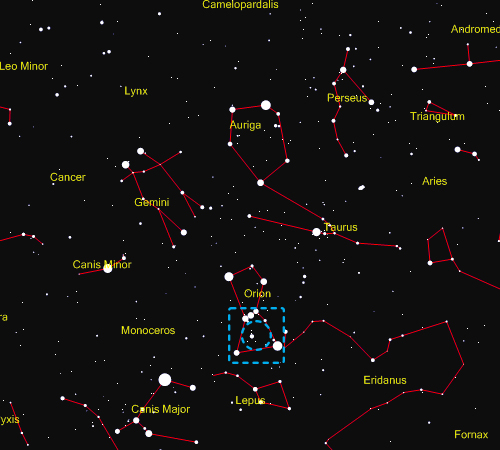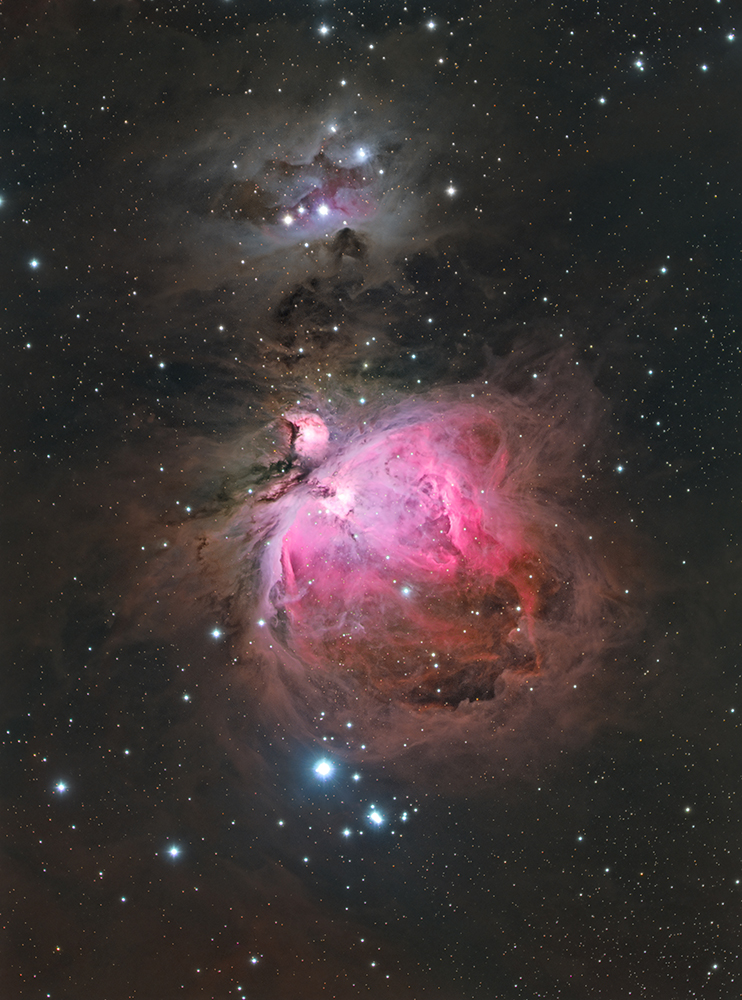NAME:
CATALOGUE:
OBJECT TYPE:
CONSTELLATION:
DISTANCE:
APPARENT MAGNITUDE:
APPARENT SIZE:
DIAMETER:
DISCOVERY:
BEST VIEWED IN:
RIGHT ASCENSION:
DECLINATION:
TELESCOPE:
DATA GATHERED:
EXPOSURES:
TOTAL TIME: |
|
The Orion Nebula
M42 / NGC 1976
Diffuse Nebula
Orion
1,300 light years
4.0
70 x 60 arcminutes
26 light years
1610, Peiresc
December
05h 35m 03s
-05º 23’ 46”
Skywatcher 80ED & 0.85x Reducer
8 nights, December 2014
L = 15 x 1200s & 20 x 60s
RGB = 6 x 600s & 20 x 60s each
Hα = 7 x 1800s
12 hours 50 minutes |


